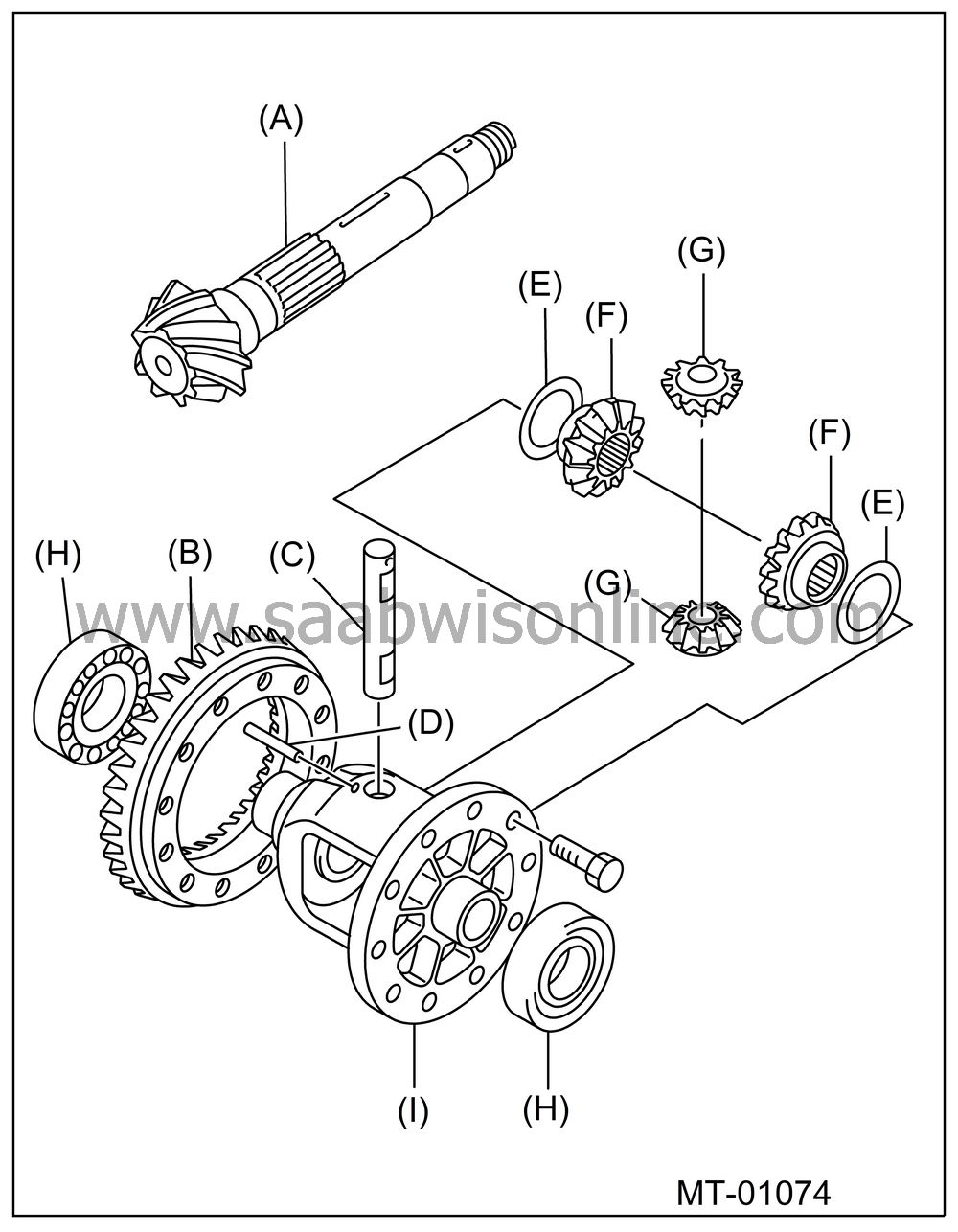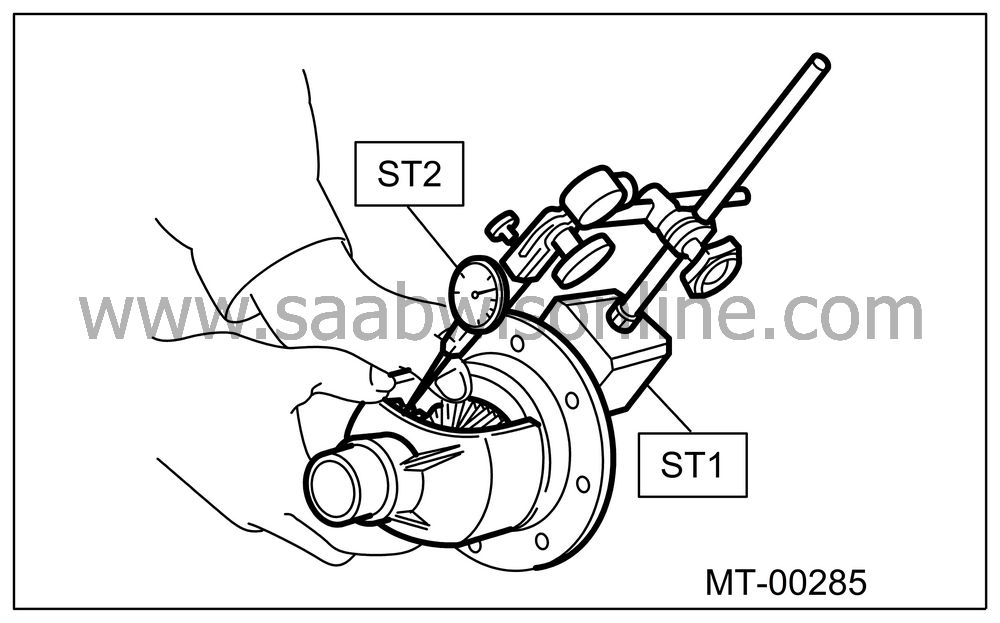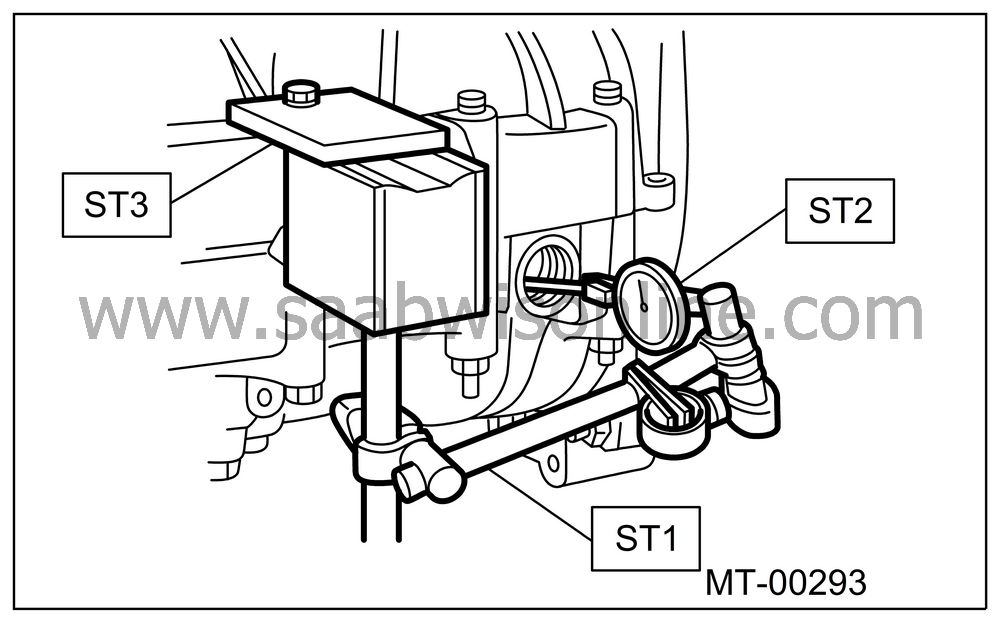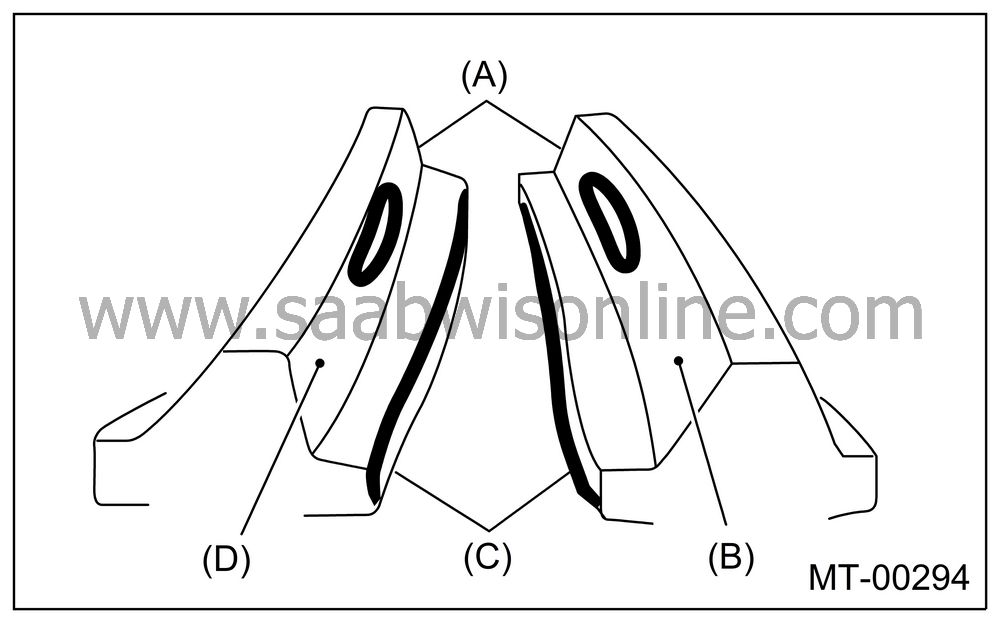INSPECTION
| INSPECTION |
Repair or replace the differential gear in the following cases:
| • |
The hypoid
drive gear and drive pinion shaft tooth surface are damaged, excessively
worn, or seized.
|
|
| • |
The roller bearing on the drive pinion shaft has a worn
or damaged roller path.
|
|
| • |
There is damage, wear, or seizure of the differential
bevel pinion, differential bevel gear, washer, pinion shaft, and
straight pin.
|
|
| • |
The differential case has worn or damaged sliding surfaces.
|
|

|
(A)
|
Drive pinion
shaft
|
|
(B)
|
Hypoid
driven gear
|
|
(C)
|
Pinion
shaft
|
|
(D)
|
Straight
pin
|
|
(E)
|
Washer
|
|
(F)
|
Differential
bevel gear
|
|
(G)
|
Differential
bevel pinion
|
|
(H)
|
Roller
bearing
|
|
(I)
|
Differential
case
|
| BEVEL PINION GEAR BACKLASH |
Measure the backlash between bevel gear and pinion. If it is not within specifications, install a suitable washer to adjust it.
| Note | ||
|
Be sure the pinion gear tooth contacts adjacent gear teeth during measurement. |
ST1 32005094 MAGNET BASE
ST2 32005095 DIAL GAUGE
Standard backlash:0.13 — 0.18 mm (0.0051 — 0.0071 in)

| HYPOID GEAR BACKLASH |
Set the ST1, ST2 and ST3. Insert the needle through transmission oil drain plug hole so that the needle comes in contact with the tooth surface at a right angle and check the backlash.
ST1 32005094 MAGNET BASE
ST2 32005095 DIAL GAUGE
ST3 32005096 PLATE
Backlash:0.13 — 0.18 mm (0.0051 — 0.0071 in)

| Note | ||
|
If the backlash is outside specified range, adjust it by turning the holder in right side case. |
| TOOTH CONTACT OF HYPOID GEAR |
Check the tooth contact of hypoid gear as follows: Apply a uniform thin coat of red lead on both tooth surfaces of 3 or 4 teeth of the hypoid gear. Move the hypoid gear back and forth by turning the transmission main shaft until a definite contact pattern is developed on hypoid gear, and judge whether face contact is correct. If it is inaccurate, make adjustment.

| • |
Tooth contact is correct.

|
|||||||||


